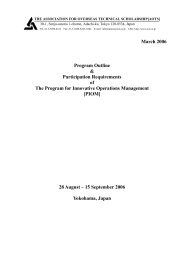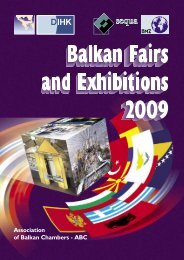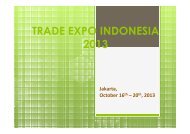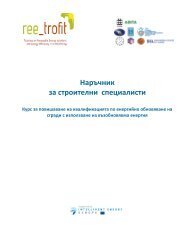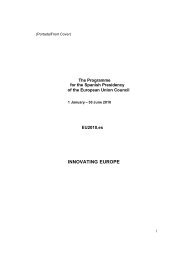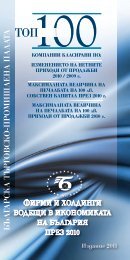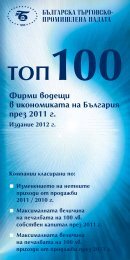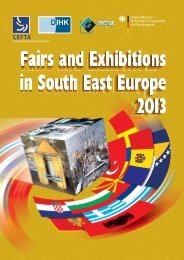Analysis of the Operation and Financial Condition of the Enterprise
Analysis of the Operation and Financial Condition of the Enterprise
Analysis of the Operation and Financial Condition of the Enterprise
You also want an ePaper? Increase the reach of your titles
YUMPU automatically turns print PDFs into web optimized ePapers that Google loves.
(4.22.)<strong>Analysis</strong> <strong>of</strong> <strong>the</strong> <strong>Operation</strong> <strong>and</strong> <strong>Financial</strong> <strong>Condition</strong> <strong>of</strong> <strong>the</strong> <strong>Enterprise</strong>The creditors’ turnover period is estimated by dividing <strong>the</strong> number <strong>of</strong> days in ayear by <strong>the</strong> creditors’ turnover ratio as follows:Accounts payable turnover Number <strong>of</strong> days in a yearperiod in days =Accounts payable turnover ratioOperating cycle <strong>and</strong> cash cycleCurrent assets constitute <strong>the</strong> liquid share <strong>of</strong> assets <strong>and</strong> <strong>the</strong> main characteristic traits <strong>of</strong>those assets are <strong>the</strong>ir high turnover rate. The functional role <strong>of</strong> current assets in <strong>the</strong>operating process is vastly different from that <strong>of</strong> fixed assets. Current assets provideongoing operating activities <strong>and</strong> constitute <strong>the</strong> main component part in <strong>the</strong> flow <strong>of</strong> businesstransactions: purchases <strong>of</strong> <strong>the</strong> production stock increase <strong>the</strong> amount <strong>of</strong> short-termliabilities; <strong>the</strong> stock <strong>of</strong> goods for sale is increasing in <strong>the</strong> operating process; sales <strong>of</strong> goodsprovide with an increase <strong>of</strong> <strong>the</strong> available cash assets <strong>and</strong> an increase <strong>of</strong> accountsreceivable. This operating cycle repeats itself many times <strong>and</strong> finally materialises in <strong>the</strong>flow <strong>of</strong> cash expenses <strong>and</strong> income.The operating cycle is comprised <strong>of</strong> <strong>the</strong> time period, in which <strong>the</strong> payment for rawmaterials <strong>and</strong> components is collected, <strong>and</strong> <strong>the</strong> time period, in which <strong>the</strong> cash from sales <strong>of</strong>goods arrive in an enterprise.Operating cycle = Stock turnover period + Debtors’ payment period (4.23.)The length <strong>of</strong> <strong>the</strong> cycle depends on <strong>the</strong> following values: debtors’ payment period; <strong>the</strong> period in which consumables <strong>and</strong> raw materials kept in <strong>the</strong> warehouse; duration <strong>of</strong> <strong>the</strong> technological cycle <strong>of</strong> operations; period <strong>of</strong> storage <strong>of</strong> goods for sale in a warehouse; payment term <strong>of</strong> trade accounts payable.Cash cycle – period <strong>of</strong> time within which an enterprise invests its cash assets instock <strong>and</strong> accounts payable.Cash cycle = Operating cycle – Accounts payable turnover period (4.24.)The shorter <strong>the</strong> cash cycle, <strong>the</strong> more efficient is <strong>the</strong> use <strong>of</strong> current assts. Cash cyclecan be shortened as follows: by increasing <strong>the</strong> rate <strong>of</strong> stock turnover; by extending <strong>the</strong> creditors’ payment periods; by reducing <strong>the</strong> debtors’ collection periods; by way <strong>of</strong> optimisation <strong>of</strong> <strong>the</strong> technological cycle <strong>of</strong> operations.The length <strong>of</strong> <strong>the</strong> cash cycle is one <strong>of</strong> <strong>the</strong> efficiency measures for <strong>the</strong> use <strong>of</strong> currentassets. The shorter <strong>the</strong> cash cycle, <strong>the</strong> more efficient is <strong>the</strong> management <strong>of</strong> current assts.80



